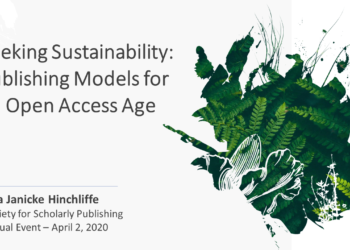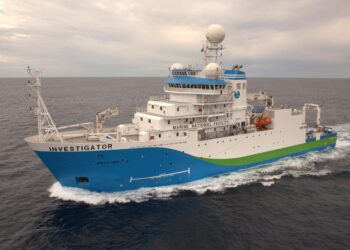Editor’s Note: Today’s post is by Tasha Mellins-Cohen. Tasha is Executive Director at COUNTER and Founder of Mellins-Cohen Consulting.
Puzzled by Shift+OPEN, Community Action, Opening the Future, and all the rest — or are you stuck in the days of Gold for Gold and APC Prepay? As some parts of our community call for new business models (now with extra equity!) and others mourn the (greatly exaggerated) demise of subscriptions, many of us are looking at the plethora of open access business models and trying to make sense of the ever-increasing list of options.
As part of my work to help not-for-profit publishers with their open access (OA) transitions, I have developed a classification system for OA business models. Considering the different models as broad groups with shared attributes enables us to have more effective discussions about what types of model are the best fit for each publisher, taking into consideration the discipline in which they publish, the geographic diversity of their authors, existing institutional and funder relationships and mandates, and of course the types of content they publish. After all, what works for a chemistry journal publisher serving mostly European authors may be entirely unsuitable for a publisher releasing arts monographs in Asia!
So how does it work?
Each time a new OA business model is announced, I dig into the description and break the model down, as far as possible, into component pieces. Back in 2020 when I first did this exercise, I found four broad categories of business models and three alternative categories. Thus far, nothing I’ve come across has broken out of those seven boxes, so figure 1 shows how the system breaks down models in use in the market as of February 2024.
In the rest of this blog post I’ll give you a short summary of each category and describe what I consider to be the archetypal business model within each of them.
Category one: Transactional
Some of the best-known OA models are transactional, where publishers levy a fee per item published, following in the footsteps of OA innovators like Biomed Central. Transactional models, which shift costs directly to research producers, are proven to work at scale, but are associated with at least two ethical questions: the first is of course whether these models can be made globally and disciplinarily equitable, while the second is the perception that pay-to-publish may influence editorial standards in predatory or potentially predatory publishers.
Archetype: Processing charges (article, book, and chapter). Literally a fee for publication, which takes the place of subscription or other sales revenue.
Category two: Bundled
Originally used to bundle reading and publishing spend, these models have expanded to incorporate pure publish arrangements. Working at scale and leveraging well-established publisher sales routes, bundled models repurpose existing spending on both subscriptions and OA, but require a great deal of effort to negotiate and deliver. Questions about global equity pricing persist in this category. While big bundles like Projekt DEAL garner a lot of attention, small not-for-profits like the Biochemical Society are also negotiating bundles.
Archetype: Capped bundles. Sometimes called Read-and-Publish, capped bundle pricing is based on pre-existing subscription payments, whereby libraries or consortia pay to maintain subscription access to journal or book lists. Overlaid on this read fee is a separately calculated payment for OA, usually based on a standardized processing charge. In many cases authors must seek institutional permission to publish OA under the terms of the deal.
Category three: Cooperative
Probably the most varied category, and the subject of the most innovation and experimentation at the moment, the models under the Cooperative heading rely on cooperation between institutions — think of Subscribe to Open (S2O) as offered by Annual Reviews as an example. Cooperative models have been proven to work well for smaller portfolios and for high-profile individual titles, but questions have been raised about the longevity of models that rely on what are essentially subscriptions to free content, given the increasing pressure on library budgets.
Archetype: Subscribe to Open. Subscribers are required to maintain their subscriptions to allow content to be published OA. Many S2O offers are predicated on a discounted subscription price, with a requirement for a fixed proportion of existing customers renewing. If the renewal threshold is reached, the content published in that subscription year will be available under OA licenses. If not, the content remains closed.
Category four: Non-library funding
Sometimes called Diamond, I use the more descriptive term ‘non-library funding’ in discussions with publishers. Models like this have been operating for some time, with differences depending on the actor providing the funding and the duration for which funding is guaranteed. These models reduce publishers’ reliance on traditional sales routes, but they raise questions about control, editorial independence, and long-term sustainability. SciELO is a fabulous example of sustainable, equitable non-library funding.
Archetype: Institutional or society support. Primarily seen in mission-driven organizations, this type of support allows publishers to offer fee-free OA to authors from within the institution or society, with confidence that their operating costs will be covered. Authors from outside the institution or non-members of the society may or may not be charged a transactional fee. In some cases, funding constraints limit the number of articles or books that may be published in any given year.
Categories five and six: Delayed and Green OA
The more stringent funder mandates define OA as being ‘full and immediate open access to the version of record’. The models in my alternative OA category do not fulfil both parts of that definition, offering either immediate access to something other than the version of record (‘green’ OA), or delayed access to the version of record. From a publisher perspective, the delayed OA options are actionable business models, while green options offer routes to compliance that don’t necessarily require sales input.
Delayed OA archetype: ‘Bronze’. Applies when publishers make their content freely available in perpetuity after expiry of an embargo. Typically favored by society publishers; commercials often re-lock content after a number of years.
Green OA archetype: Preprints. The original route to OA, exemplified by arXiv, preprint deposition allows authors to make early versions of their work, prior to peer review, available for public review and use.
Category seven: Pseudo-models
SPA-OPS, a Plan S-funded project, identified several opportunities for increasing OA, including various product and licensing opportunities such as open platforms and sibling journals, as well as cost-shifting systems such as consortial publishing. I have retained those options as they are mechanisms publishers may wish to explore in parallel with developing true OA business models.
A side note on transition and transformation
You’ll have noticed that ‘transitional’ and ‘transformational’ haven’t cropped up in my categories, and that’s very deliberate. Transition or transformation can be a goal or feature of any of the OA business models I’ve talked about, so the terms are not helpful in defining categories. For example, many of the original bundle deals were labeled as transitional or transformational, but not all – and some would argue far too few – of these deals have yet resulted in a full flip to OA.
Your challenge
As a community, we do love to give business models new names – so the next time you see an announcement of a new business model, see if you can work out which category it falls into. It’s easier than you think!
Discussion
3 Thoughts on "Guest Post – Making Sense of Open Access Business Models"
Open access landscape is so diverse and evolving so much that it is often difficult to navigate and identify the core differences among different models. Categorizing all available ones is a great start by getting a quick overview. The next step is obviously digging deeped into each, and finding unique aspects each has to offer. Thank you Tasha, for sharing your mapping technique with us all!
I’ve done a lot of deeper digging into not just the categories, but the models which fall into each of them. Unfortunately if I included all of that it would be much too long for a blog post!
Thank you so much, Tasha. Already shared this twice today! Look forward to connecting – it would be great to connect in 2D/real-time about this in context of the discussion I tagged you in on LinkedIn today…




